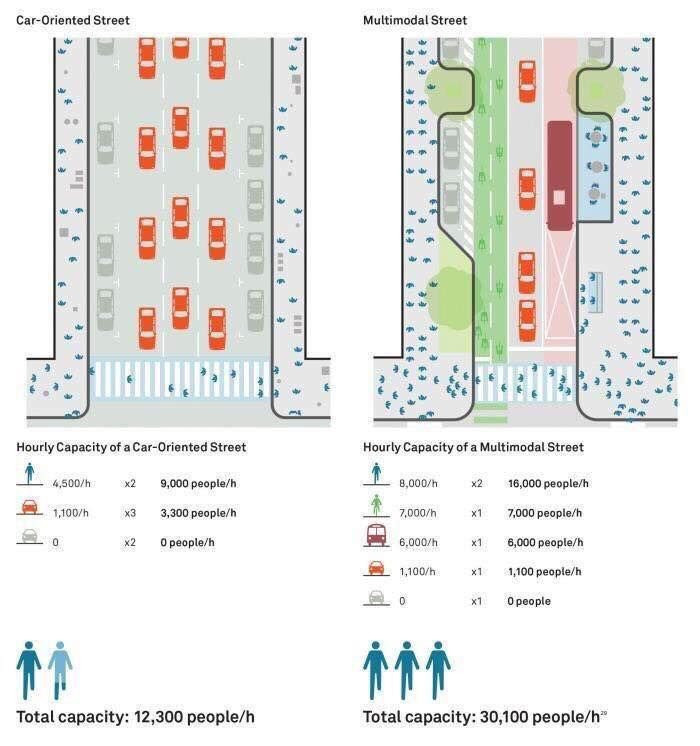Streets development has followed a traditional, urban model in which car has been almost considered the only way of transport for the most part of the XX and the XXI centuries. Fortunately, this perspective is changing as time goes by. But what exactly is the car-oriented street?
A car-oriented street is one which puts on the top the car mobility. Cars are the kings on the streets and specifically those which are occupied by just one person. Space for pedestrians is sacrifice in order to give it to cars, both the parked and the driving ones. As a result, people who live or pass often through such streets suffer from noise, psychical problems and breath the pollution cars and motorbikes expel. Think on the negative impacts this urban model has on people who live in avenues with, let’s say, four, five or even more car lines.
In comparison to the above old-fashion model, a different, more humane perspective is emerging to give the street back to people. The recipe is easy and set in motion in a lot of cities whereas implemented in some others: take surface from cars to give it to people. It is a piece of cake if economical and political interests do not disturb. Quite on the contrary and due to climate change, more and more people have realized that we should change the transport model if we want to face it and avoid its negative effects. There are a variety of actions to reduce noise and pollution, and all go to reduce car (and other ways of pollutant transport) and bid on low- or even zero-impact ones. Riding a bike and walking fulfill this target.
Now look at this picture:
In the car oriented street (left-hand side), there are two parked-car lines plus three car lines plus two narrow sidewalks. The realistic estimation shows a total capacity of 12,300 people/h by summing every moving people. On the other hand, the multimodal street offers a different view. Based on the same surface, we have two width sidewalks plus a bidirectional bike line plus a bus line plus a car line. In this case figure shows that the total capacity is 30,100 people/h, more than double. In addition, trees and benches make the street friendlier. Thus, the selection of the best model is like falling off a log.
